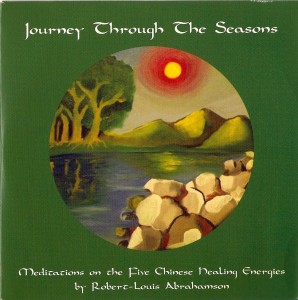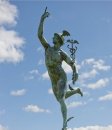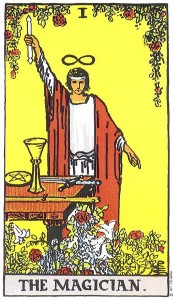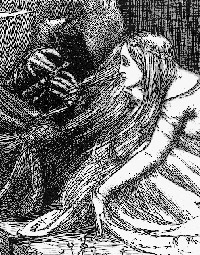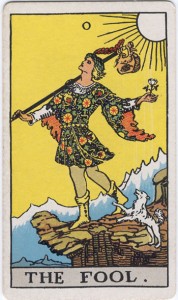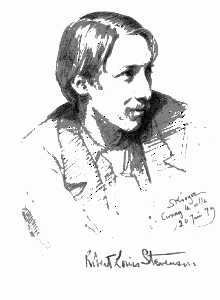Podcast: Play in new window | Download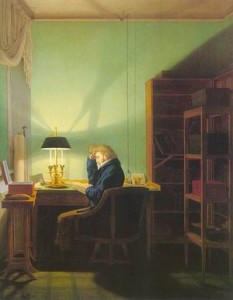
This evening, under lamplight, we are looking at Wonder, the wonderful moments when we penetrate our masks so that “I see you and you see me – and ain’t that wonder?” as the Kinks sing. There is always curiosity (“I wonder …”), but which kind of curiosity gives us true wonder? There are songs by Mokey Fraggle, Marvin Gaye, Taj Mahal, Incredible String Band and the Lovin Spoonful, and readings from Walt Whitman and RLS.
 Leaves of Grass: The First (1855) Edition (Penguin Classics)
Leaves of Grass: The First (1855) Edition (Penguin Classics)
Podcast: Play in new window | Download
Here is the Evening under Lamplight show that went out on Cambridge 105, Cambridge Community Radio, on Sunday, 5 September 2010. It celebrates the season of Hairst, or Harvest, a time of peaceful abundance, following our anxiety about whether we’ll have enough or whether we’ll even make it to the end of our Journey. The show features
- the Harvest meditation from RLA’s CD Journey through the Seasons: Meditations on the Five Chinese Healing Energies
- music from the Kinks and Dylan, of course, and also Nick Drake, Ella Fitzgerald & Louis Armstrong, Manfred Mann, Leonard Cohen, The Band and King’s College Chapel Choir
- readings from RLS, the psalmist, Walt Whitman and Wendell Berry.
You are invited to attend and share this abundant harvest.
 Face To Face Kinks, “There’s Too Much on My Mind”
Face To Face Kinks, “There’s Too Much on My Mind”
 Song of Myself (Dover Thrift Editions)
Song of Myself (Dover Thrift Editions)
What Are People For? (Wendell Berry)
 Pink Moon Nick Drake, “Harvest Breed”
Pink Moon Nick Drake, “Harvest Breed”
 Porgy and Bess: Introduction – Act II Scene 1: I Got Plenty O’ Nuttin’ (Porgy, Chorus)
Porgy and Bess: Introduction – Act II Scene 1: I Got Plenty O’ Nuttin’ (Porgy, Chorus)
 Stage Fright The Band, “Sleeping”
Stage Fright The Band, “Sleeping”
 Biograph Dylan, “Quinn the Eskimo”
Biograph Dylan, “Quinn the Eskimo”
 The Story Manfred Mann, “The Mighty Quinn”
The Story Manfred Mann, “The Mighty Quinn”
 Ten New Songs Leonard Cohen, “Land of Plenty”
Ten New Songs Leonard Cohen, “Land of Plenty”
Podcast: Play in new window | Download
This latest Evening under Lamplight brings you an extended programme, featuring the trickster god Hermes (or Mercury – tricksters go by many names), and helping you find your own Hermes Moment – that time when you met Hermes, bringing you some message from above, leading you down into your own depths at a moment of confusion or indecision, and bringing you good fortune in ways you would never have expected. There’s a wide variety of music, and two stories, and some poetry, and still we haven’t covered everything. So watch out for another Hermes programme sometime down the line. — RLA
Podcast: Play in new window | Download E
E
The latest Evening under Lamplight features Cool Men – a wide variety of characters, many unsavoury, some few a bit more attractive – but all worth attending to. So take up the invitation to attend and join us for this internationally acclaimed (yes, I can really say this with a straight face) radio programme, first broadcast on Cambridge 105 on Sunday, 8 August 2010.
(I must first apologise for the cruel way Vivaldi was cut off in the beginning of the show. It was not meant like that.)
Podcast: Play in new window | Download
[Here is the second Tarot meditation, on The Magician. With card Zero we met the Fool, walking off the cliff to start his journey (our journey) deep within, and now we meet this Magician, who points and offers what we need.]
The first person we come across after our fall from the Fool’s ledge is the Magician, standing there calm and still to greet us. This is a sumptuous picture, full of warm yellows and reds, framed by flowers.
As the Fool’s card moved from the upper right to lower left, so this card moves from upper left to lower right. This opposite movement arrests our fall. We are on the earth again.
The right hand looks like it is raised in greeting, but we discover that it is holding something, pointed to the heavens. The left hand certainly is pointing to something for us. Taken together both hands seem to be offering one complete gesture, which unifies heaven and earth, above and below. Read the rest of this entry »
Podcast: Play in new window | Download
Here is the link to the Evening under Lamplight radio show broadcast on Cambridge105 radio on Sunday, 25 July 2010, on the theme of Coming Back, as the Second Series came back on the air after a break of five months.
Some of the sound may come across a bit rough, but we’re all big enough to overlook that.
Welcome back, and let me know what you think!
RLA
Podcast: Play in new window | Download
[This week I would like to read to you a fable by Robert Louis Stevenson: “The Song of the Morrow”. Stevenson’s collection of fables and fairy tales – which was too scandalous to be published in his lifetime – is called in the manuscript Aesop in the Fog. That’s a hint to us not to expect easy morals. Things are more complicated, to suit our foggy world in which so little can be fully understood or communicated. Let the story stir you and move you, come back to it over a number of days and let the resonance play in your imagination and deep in the core of your self, while your intellect takes a holiday and does not try to figure this out. Just let the words and the images work on you. Then you may find some hints and glimpses of meaning, and maybe later you’ll understand more. There’s no rush. Let us know what you think. RLA]
The King of Duntrine had a daughter when he was old, and she was the fairest King’s daughter between two seas; her hair was like spun gold, and her eyes like pools in a river; and the King gave her a castle upon the sea beach, with a terrace, and a court of the hewn stone, and four towers at the four corners. Here she dwelt and grew up, and had no care for the morrow, and no power upon the hour, after the manner of simple men. Read the rest of this entry »
Podcast: Play in new window | Download
Our journey begins with the Fool, a trickster, the one who disrupts our complacency and calls us out of ourselves to a world of joy and liberation. Court jesters always had special dispensation to say whatever they wanted, even if it was irreverent and disrespectful. In fact the Fool was expected to be irreverent and disrespectful. That was his role.
The Fool is also a pain to have around, never letting us rest, always trying to stir us up. Yet the Fool always knows when to stop; he is benign and if he harms us, it is only for our own good. He annoys but never destroys us. Read the rest of this entry »
Podcast: Play in new window | Download
I was reading the other day a series of short meditations by Paul Ford, which appeared in the May issue of Harper’s Magazine. In an attempt to address the question “Is there an afterlife?” Ford contemplates the Grand Canyon. Here’s how he begins:
If you ever need to make your own Grand Canyon, start with a river and lift up the earth. As the ground rises the river will carry some of it away. Wait 7 million years, at which point tourists will come. Some will see eons of erosion at work; others will believe that, a mere 4,500 years back, God dragged His fingernail across the desert. (Paul Ford, Just like Heaven, in “Readings”, Harper’s Magazine, May 2010, p. 28)
That’s a good way to start – pulling us to an unexpected perspective on the “afterlife” by looking first at the Grand Canyon. The language we use to speak about the Grand Canyon might tell us something about how we see the afterlife. Read the rest of this entry »
Robert Louis Stevenson as a Countercultural Figure of the 1870s
Talk Presented to the Cambridge University Countercultural Studies Group
7 May 2010
RL Abrahamson
In 1882, Stevenson published a collection of his essays on a variety of writers: Villon, Victor Hugo, Walt Whitman, Henry David Thoreau, Robert Burns, John Knox, and others. He called the volume Familiar Studies of Men and Books. This talk will take on the form of a familiar study but of just one man, though many books. Like Stevenson, I will speak both about the man and his writings, and, as Stevenson carefully explained in the Preface to Familiar Studies, this will be only an impression, the development of one “point of view”. Thus the presentation will always be flawed; by its very nature it can never hope for any kind of completeness or accuracy: “the proportions of the sitter must be sacrificed to the proportions of the portrait,” as Stevenson says, “[…] and we have at best something of a caricature, at worst a calumny” (27.xiii). But then Stevenson embraced failure as an inevitable quality of human life. The fear of failure certainly was no reason to hold back. “Acts may be forgiven; not even God can forgive the hanger-back.”
So the point of view I am going to take in this discussion of Robert Louis Stevenson is his role as a countercultural figure of the 1870s, the decade of his twenties. We’ll probably need a working definition of countercultural, a term we have always kept pretty broad in this group. The countercultural figure, let’s say, is a person who disregards the conventions, and questions assumptions of the culture he or she resides in, but more than that, takes an active role in opposing these conventions and assumptions. This opposition can take many forms – individual or group action, political or literary, sustained or intermittent. Let’s see how Stevenson managed it. Read the rest of this entry »
